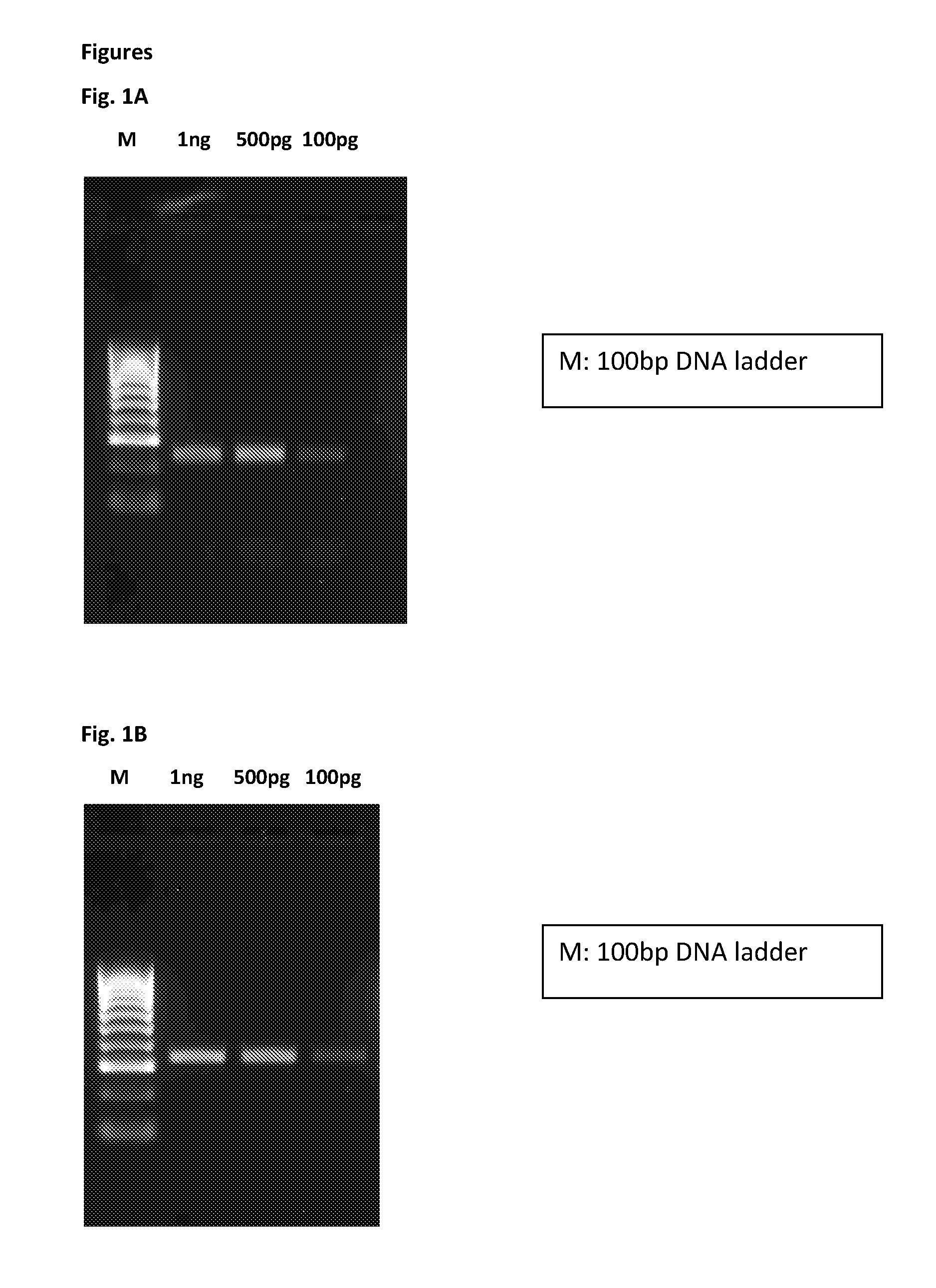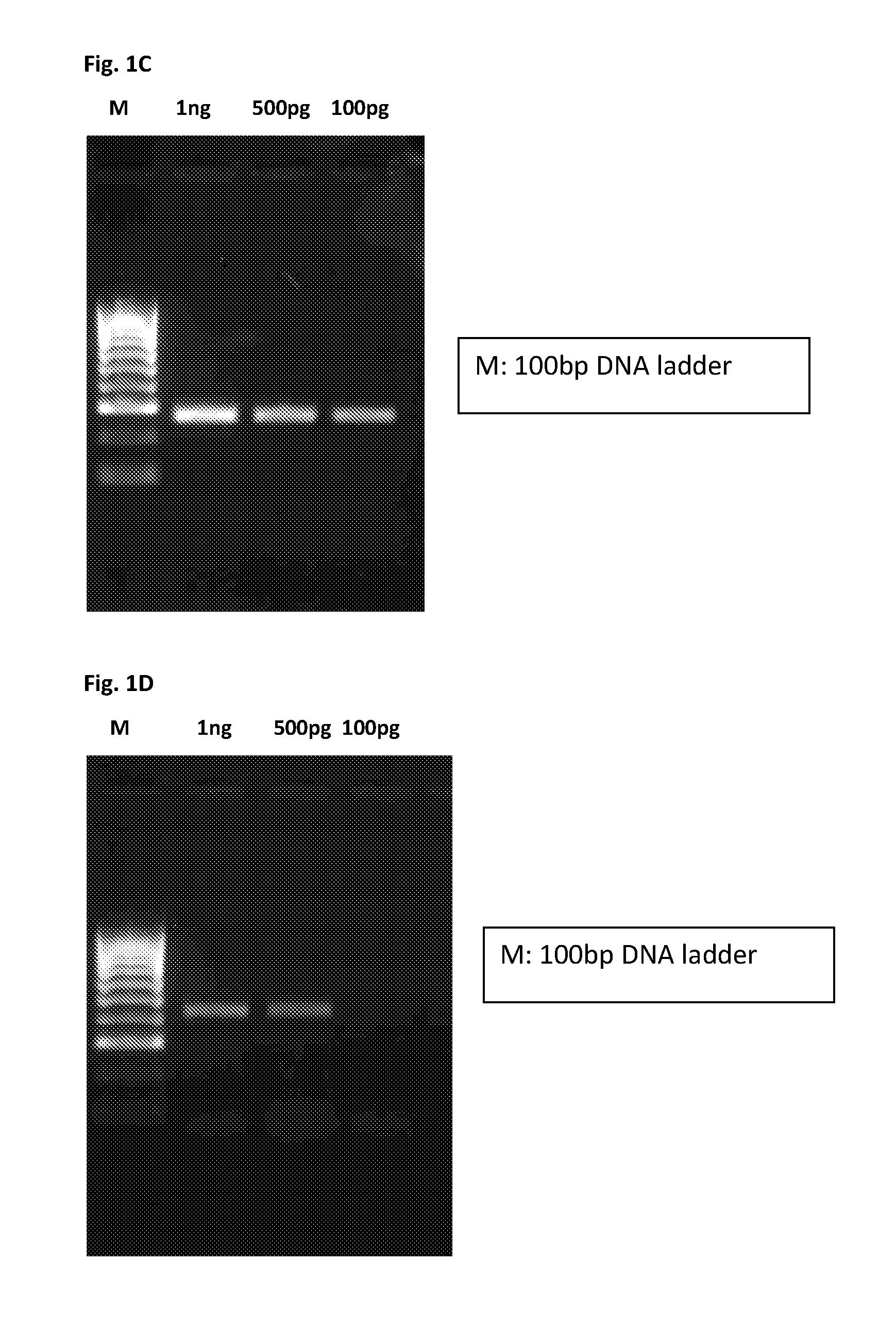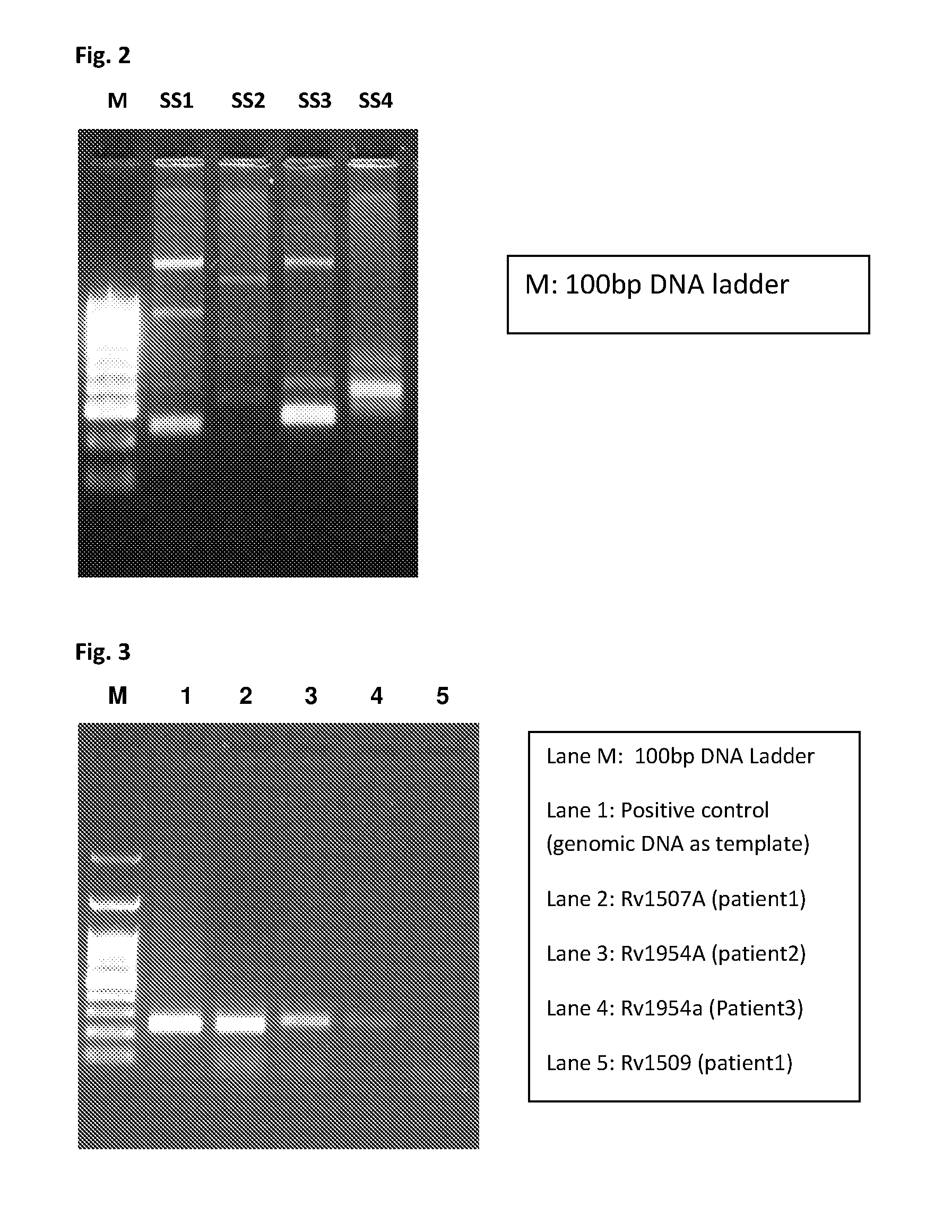Genetic markers for diagnosis of tuberculosis caused by mycobacterium tuberculosis
a technology of mycobacterium tuberculosis and gene markers, applied in the field of new signature sequences for diagnosis of mycobacterium tuberculosis, can solve the problems of lung changes, alarming mortality rate, and difficult diagnosis of mycobacteria-related diseases, and achieve the effect of high degree of sensitivity
- Summary
- Abstract
- Description
- Claims
- Application Information
AI Technical Summary
Benefits of technology
Problems solved by technology
Method used
Image
Examples
example 1
[0057]Determination of Specificity and Sensitivity of Signature Sequences
[0058]Genomic DNA for PCR Amplification
[0059]Genomic DNA of Mycobacterium tuberculosis and 13 other mycobacterial species were used for testing the specificity of signature sequences using PCR. These include, M. avium subspecies paratuberculosis, M. smegmatis (ATCC19420), M. vaccae, M. marinum (ATCC927), M. chelonae (ATCC14472), M. flavescens (ATCC14474), M. fortuitum (ATCC6481), M. kansasii (ATCC12478), M. bovis (ATCC27294), M. bovis (BCG), M. avium (ATCC25291), M. gastri, M. indicuspranii.
[0060]PCR Reaction
[0061]The PCR reaction mixture (50 μl) consisted of 10 xtaqPCR buffer, 0.5 mmolMgCl2, 0.4 mmol dNTP, 10 pmol forward and reverse primers respectively, 4% DMSO and 1Utaq DNA polymerase.The reaction conditions were the following: 95° C. for 5minutes, followed by 35 cycles of 95° C. for 30 seconds, annealing temperature 50° C. for 30 seconds, 72° C. for lminute and finally 72° C. for 10 minutes. All PCR produ...
example 2
[0065]Evaluation of Mycobacterium tuberculosis-Specific Primer Pair Using Clinical Samples
[0066]A) Amplification of Signature Sequences from Patient Sputum Samples
[0067]Sputum samples were processed by the Universal Sample Processing (USP) method for DNA extraction as described by Chakravorty et al (J Clin Microbiol 43, 4357, 2005). DNA was isolated from the USP sediments by boiling in the presence of five volumes of solution containing 10% Chelex-100 resin, 0.03% triton X-100, and 0.3% Tween 20. The isolated DNA was stored at 20° c and used for PCR assay.
[0068]PCR reaction was carried out using specific primers as given in Table 3.
[0069]The results show amplification of signature sequences in patient sputum sample (FIG. 2) demonstrating the diagnostic utility of the signature sequences for detecting pathogenic Mycobacterium tuberculosis.
[0070]B) Amplification of Signature Sequences from Patient Blood Samples
[0071]DNA from blood samples of tuberculosis patients were isolated as per...
PUM
| Property | Measurement | Unit |
|---|---|---|
| temperature | aaaaa | aaaaa |
| temperature | aaaaa | aaaaa |
| temperature | aaaaa | aaaaa |
Abstract
Description
Claims
Application Information
 Login to View More
Login to View More - R&D
- Intellectual Property
- Life Sciences
- Materials
- Tech Scout
- Unparalleled Data Quality
- Higher Quality Content
- 60% Fewer Hallucinations
Browse by: Latest US Patents, China's latest patents, Technical Efficacy Thesaurus, Application Domain, Technology Topic, Popular Technical Reports.
© 2025 PatSnap. All rights reserved.Legal|Privacy policy|Modern Slavery Act Transparency Statement|Sitemap|About US| Contact US: help@patsnap.com



